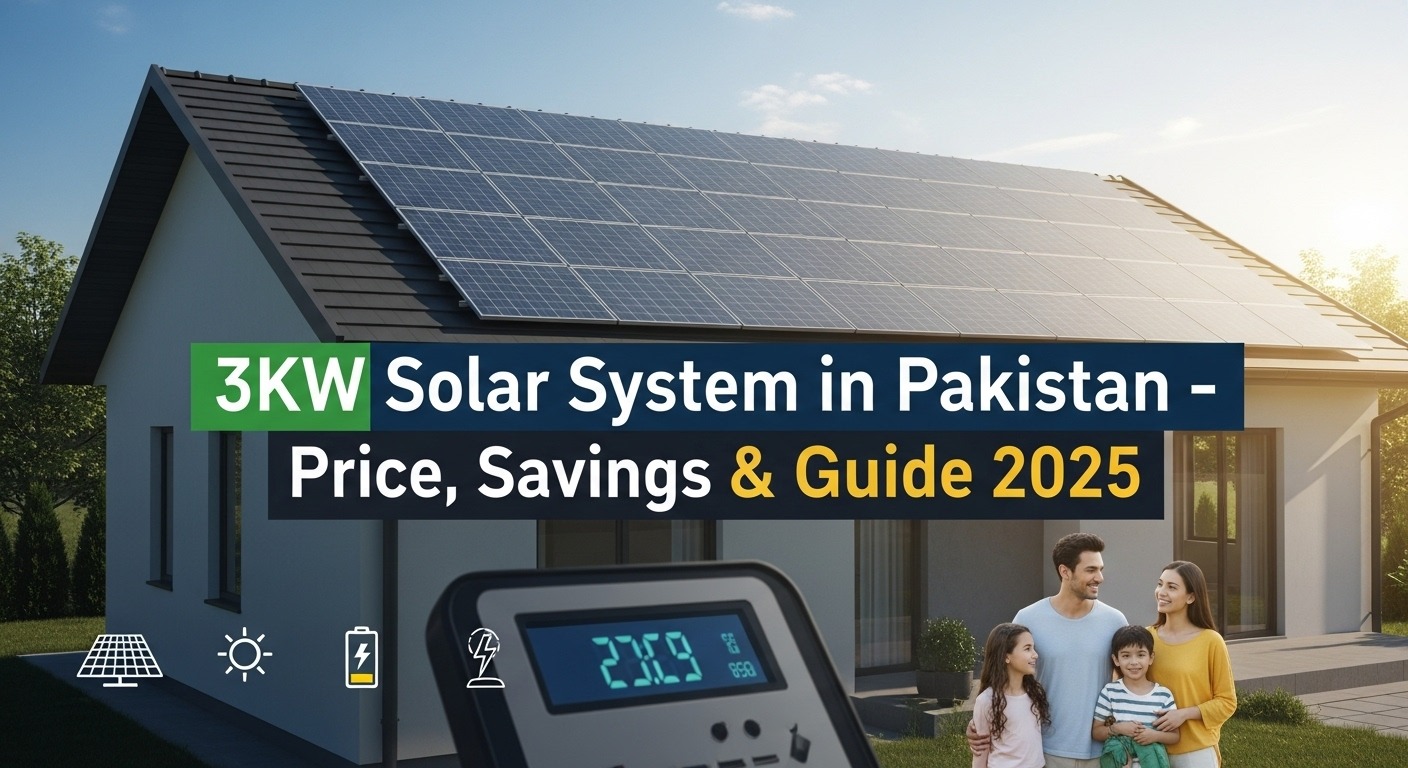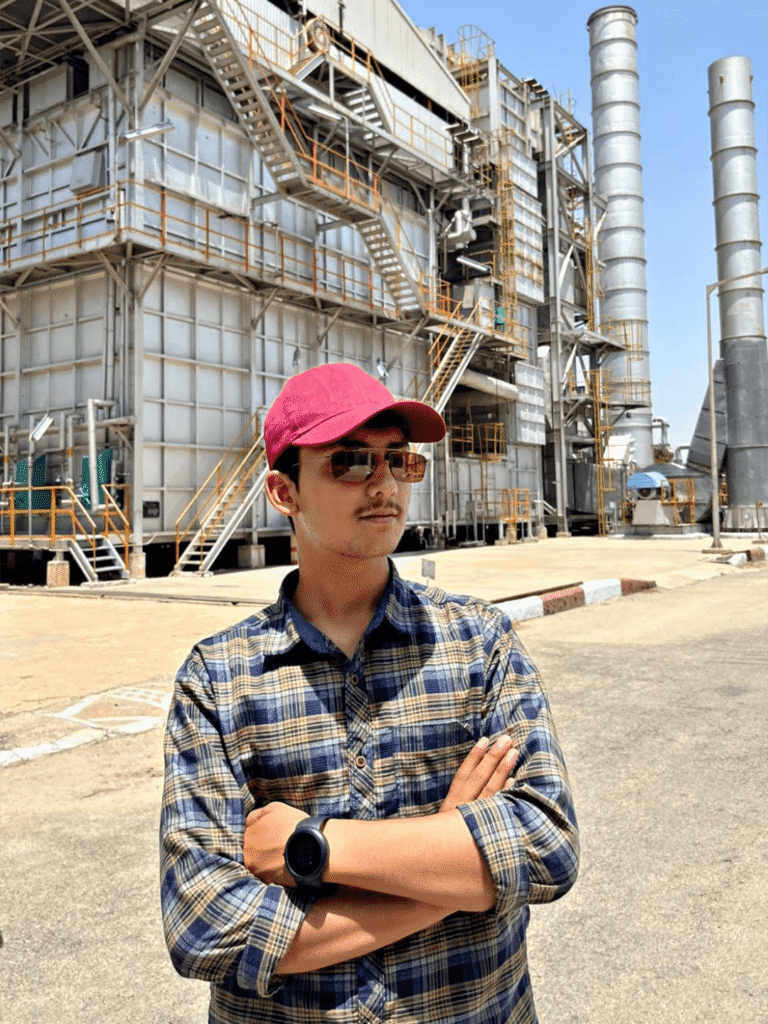
If you’re living in one of the many houses across Pakistan that consume between 300 to 400 units of electricity monthly, you’ve probably noticed how the bills don’t match your relatively lower consumption. I’ve seen this pattern firsthand in several homes I’ve consulted with—despite using fewer units, the higher electricity rate per unit, additional taxes, and charges from the government and local energy provider make the bills unexpectedly steep.
That’s where a 3kW solar PV system becomes the best choice. It helps to eliminate those high bills and offers a long-term benefit—imagine saving for 25 years. Based on my professional experience, this system is the ideal fit for smaller families with stable energy needs. The complete system, including a 3kW inverter, Tier 1 solar panels, mounting structure, and installation of 2 tubular batteries, comes at an affordable price of Rs. 310,000 (as of July 2025).
From my own installations, I’ve seen the actual production capabilities match the expected performance. This article offers an honest overview of what this system entails, its real-world applications, and where it’s most suitable. Whether you’re exploring on-grid or hybrid systems, the pricing, variety of options, and flexibility in choosing desired brands and inverters can significantly impact the overall cost—something every buyer should carefully consider.

Article By Engr. Shaheer Irfan
I’m a Project & Design Engineer at Ocentra Engineering Services, where I focus on designing and managing solar energy projects across Pakistan. I’m passionate about renewable energy and enjoy writing informative blogs that help people understand solar technology and make smarter energy decisions.
What is a 3kW Solar System?
From my hands-on experience with solar setups in Pakistan, a 3kW solar panel system is one of the most typical choices for families with average consumption needs. In simple terms, it’s a system that produces around on average 12 kWh of electricity per day, which means it generates 12 units daily—enough to power small household appliances like fans, lights, fridge, and even a water pump if used carefully. This system usually consists of six panels, each with a capacity ranging from 605 to 615 watts, paired with a 3kW inverter and all other essential items required for installation.
This setup represents the energy needs of a large portion of households across the country. However, if your requirements include running heavier appliances like an air conditioner, ironing machine, or multiple devices simultaneously, you might need to upgrade to a 5kW or even a 10kW system. From what I’ve seen in real installations, while a 3kW system is highly capable for most homes, understanding your unique energy usage is key before you invest.
Hybrid 3kW Solar System Price in Pakistan
In Pakistan, a 3kW hybrid solar system is a smart choice that’s commonly used by families who want a balance between daily electricity needs and a bit of backup for night or power outages. From my own field experience, these hybrid setups are ideal for areas where grid power is unstable. What makes them practical is their ability to switch between solar panel power, battery power, and the grid—thanks to multi-mode inverters.
When it comes to price, it depends on the type and number of batteries you choose to add. On average, two 185AH, 12V batteries are added to the inverter, with each battery costing around Rs-42,000. Furthermore, hybrid inverters are more expensive than on-grid ones, which increases the overall cost. But in my professional opinion, this extra investment is worth it for those who want both daytime energy generation and night-time reliability.
Hybrid 3kW solar system price in Pakistan with Batteries
In Pakistan, the 3kW hybrid solar system is one of the most commonly used setups, especially in areas where people face frequent power outages. From my hands-on experience installing solar units in both urban and rural homes, the benefits of a hybrid system increase significantly with the addition of net metering—allowing households to save even more by exporting excess energy back to the grid.
The price of a hybrid 3kW solar system with batteries is approximately Rs. 394,000 PKR, but the final cost may vary depending on the type and size of battery you choose. If you go without batteries, the charges drop to around Rs. 310,000, which includes the inverter and full installation. Many homeowners I’ve worked with prefer the battery-backed system for continuous power and long-term savings.
What Does A 3kW Solar System Consist Of?
When I first started exploring solar options in the local market, I realized that the real value of a 3kW solar system lies not just in the cost, but in the quality, efficiency, and overall affordability of its components. A reliable 3kW package typically consists of Tier 1 solar panels from top brands like Longi, Jinko, Canadian, JA, and Trina—names that have earned a solid reputation over the years. These panels are not only durable but also ensure maximum output with minimum space.
In my own installations, I’ve seen how a well-selected package includes a high-quality inverter, a strong mounting structure, DC cables, breakers, and, in the case of a hybrid system, dependable batteries. What sets companies like Alpha Solar apart is their ability to build a mutually beneficial relationship with their customers, always valuing product reliability. It’s this commitment that makes a 3kW setup a smart, long-term investment for households looking for lasting performance and peace of mind.
How Many Solar Panels Do I Need For 3kW Solar System?
When helping homeowners in Pakistan choose a 3kW solar system, one of the most frequent questions I get is about the number of panels required. The answer actually depends on the size of each panel. For example, if you go with smaller-sized panels, you’ll need a higher quantity to achieve the desired capacity. But in my professional experience, most commonly used setups now include 605-watt or 615 watts panels.
With this efficient configuration, you only need 5 panels to meet the total 3kW capacity. This setup not only helps maximize energy production but also saves valuable roof space while fulfilling your electricity needs. If you’re looking to make the most of your investment, sticking to this panel size is the smart way forward. I’ve installed this very setup in countless homes, and it continues to deliver solid performance across varying locations.
What Appliance Can I Run on 3kW Solar System?
Based on my experience installing solar setups across Pakistan, a 3kW solar system is ideal for an average household that doesn’t consume more than 12 units of electricity per day. It’s surprisingly efficient for small to medium families. Here’s a practical detail of the appliances you can confidently run using this setup:
Suitable Applications of a 3kW Solar System
From my hands-on experience installing solar systems across Pakistan, I can confidently say that a 3kW solar panel system is the ideal choice for small to medium-sized homes, shops, offices, and even businesses with an annual electricity consumption of up to 4000 kWh. The majority of households I’ve worked with prefer this setup as it meets their daily electricity needs while staying cost-effective and sustainable. It’s not just about saving money—it’s about accessing clean, renewable energy for the long term.
A 3kW system can easily power essential appliances like three fans, seven lights, a refrigerator, LED TV, and a washing machine, even when used simultaneously. In some cases, I’ve configured it to operate an inverter air conditioner, used exclusively for that purpose—a game-changer during hot summers. The benefits of this setup include providing ample energy and supporting reliable, everyday use, making it a smart solution for anyone looking to reduce dependency on the grid while still enjoying uninterrupted comfort.
Return on Investment (ROI) and Payback Period
When helping homeowners invest in a 3kW solar system, I always emphasize how the real value depends on more than just installation costs. The ROI is shaped by factors like energy savings, system efficiency, and even government incentives available at the time. In my professional experience, I’ve seen that the Payback Period for most Hybrid setups typically ranges between 1.5 to 2 years. That means you’ll start seeing Long-Term Savings fairly quickly, especially if you use Net Metering to your advantage.
With net metering, users can offset their electricity tariffs by selling surplus solar energy back to the national grid, helping them recover their investment faster. After the initial payback, you get almost free electricity for up to 20 to 25 years, while enjoying minimal maintenance needs. Over time, the impact of this system becomes more than just financial—it’s a smart energy decision tailored to meet local consumption patterns.
Looking to switch to solar? Get a free quotation and expert consultation from our team today! Whether you’re exploring options for your home or business, we’re here to guide you every step of the way. Simply leave us a message or give us a call, and our solar experts will help you choose the best system for your energy needs and budget—no obligation, just honest advice.
Ready to switch to solar?
Get Solar Power Today

